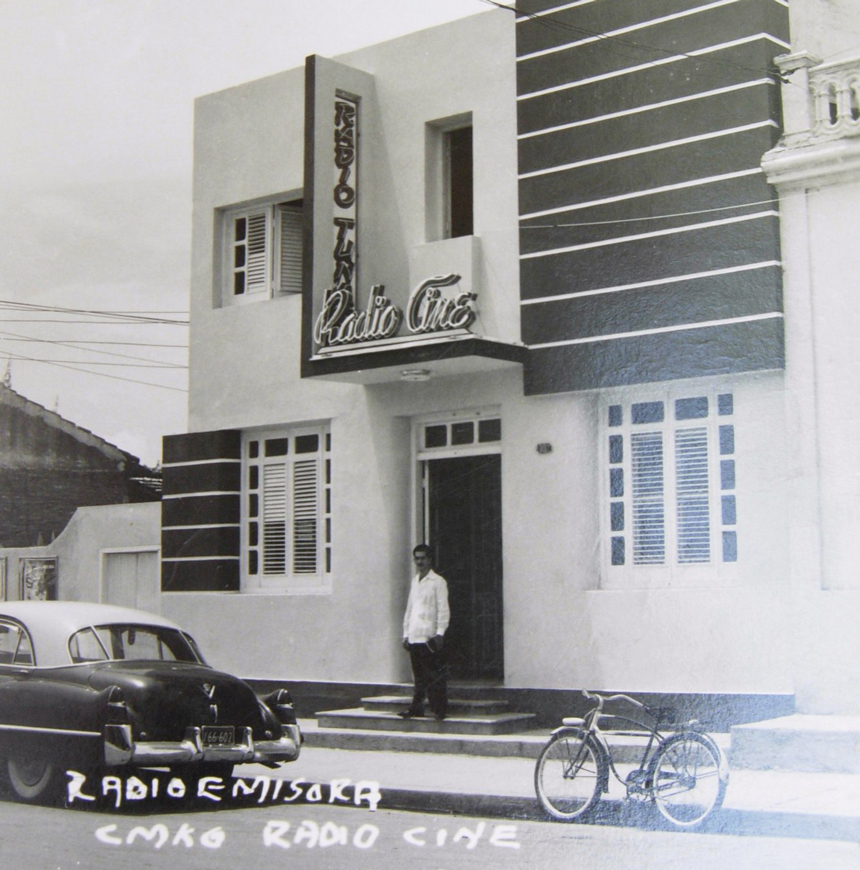
Las Tunas was one of the first places in Cuba to have a radio station. And, behind each of the radio stations that have been born in this region since that event, an intense history, full of names and anecdotes that mark the dynamics of a unique, genuine medium, capable, like no other, of bringing its voice to the people and telling all the nuances in the first person.
Today, when the birth of Luis Casas's 2LC takes us back to the beginnings the country of this learning by ear, we would like to pay tribute to one of those pioneers, CMKG Radio Tunas, which, as its identification said, transmitted: "from Victoria de las Tunas, Balcón de Oriente, the cradle of El Cucalambé."
It is said that the station was born in Holguín, from where it was brought to begin broadcasting from the area around Maceo Park; and it returned to the City of Parks.
Then, thanks to the will of the people and some help from the mayor of the time, it returned to these lands to be reopened on 21 September 1942 and was then located next to what used to be the Las Arenas bar, two corners away from the memorable Casino hotel.
It had 250 watts of handmade equipment that, in the eagerness to make it more and more professional, soon included RCA equipment from Camagüey, which brought it up to 500 watts. Later, an experienced technician also added two light bulbs and they reached almost a thousand watts. The sound was steady and uninterrupted to Gibara.
A young man named Roberto opened the plant at 5:00 in the morning and the transmissions stopped around 13 or 14 hours later, with a program of a marked cultural and advertising nature that took the plant out of its premises and brought life to the city.
Its owner, Ramón Espinosa, who alternated between operator and announcer, also traveled the country looking for talent to join the CMKG team.
From Santi Spíritus they brought José Silveira, a tobacco shop reader with an enviable voice who moved with his wife to these parts; from Santa Clara came Benito Pérez Limonta, with that unique timbre for declaiming poetry that made more than one fall in love, among them the girl from Villamar Street who drove around in her '54 Mercury car every day while he was in the booth.
Talent also came from Jobabo, with an announcer who took on a twice-weekly classical music program, in which Chopin and Beethoven were discussed for the first time on Las Tunas Radio.
Sometimes they would go with the huge tape recorder to the doorway of the shop La Revoltosa, in what is today the Enrique Casals tobacco shop, and they would advertise the products available. People passing by would get, thanks to an interview, the pleasure of being on the radio. It is said that sales increased a lot on those dates. The La Fortuna shop also sponsored airtime.
In 1950, the station began broadcasting the news program La Palabra, the first radio news program in the history of Las Tunas territory, produced by journalist Mario Torres López. On 14 August 1953, Radio Tunas moved to the Radio Cine building, where the Raúl Gómez García theatre is currently located.
There, with more than 300 wooden seats that reclined on the ground floor and some 40 on the upper floor made of springs, they held a matinee at noon and another batch of films from 8:00 pm onwards.
The story goes that Espinosa went to see Oscar Varona, who had a dairy near El Cornito, and bought him a large fridge that he was going to throw away. He mounted it under the stage, after adapting it, and managed to cool the place, because there was no air conditioning or anything like that.
They also talk about the show nights. First, of Chaflán, the charismatic announcer who was an ace at all that communication and jokes; and later, when he left for Havana in search of another fortune, of the work carried out by Fígaro, a half-tempered barber who had the same gift for good shows.
Radio Tunas was active until nationalization merged it with Circuito and the incipient Provincial Radio System was born. A mechanism that has been channeling its steps in the heat of the times, but that continues to have among its springs the essence of beating with the people, from their spaces and visions, to grow.






